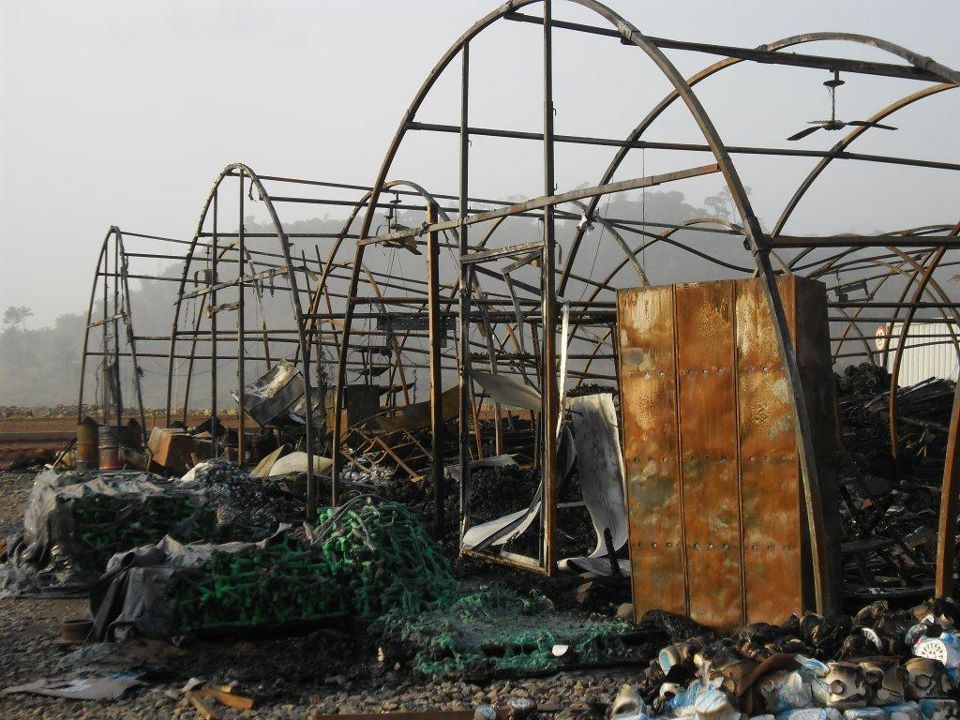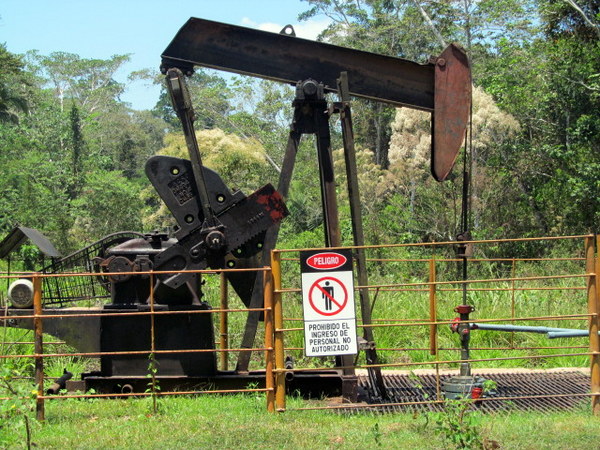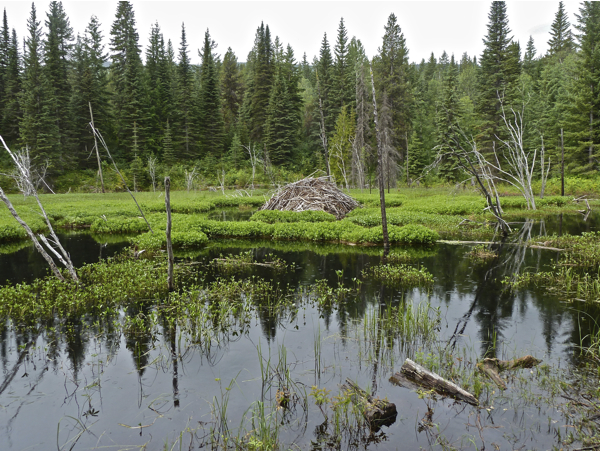by Deep Green Resistance News Service | Nov 28, 2012 | Climate Change
By Institute of Physics
Sea-levels are rising 60 per cent faster than the Intergovernmental Panel on Climate Change’s (IPCC) central projections, new research suggests.
While temperature rises appear to be consistent with the projections made in the IPCC’s fourth assessment report (AR4), satellite measurements show that sea-levels are actually rising at a rate of 3.2 mm a year compared to the best estimate of 2 mm a year in the report.
These findings, which have been published today, 28 November, in IOP Publishing’s journal Environmental Research Letters, are timely as delegates from 190 countries descend on Doha, Qatar, for the United Nation’s 18th Climate Change Conference this week.
The researchers, from the Potsdam Institute for Climate Impact Research, Tempo Analytics and Laboratoire d’Etudes en Géophysique et Océanographie Spatiales, state that the findings are important for keeping track of how well past projections match the accumulating observational data, especially as projections made by the IPCC are increasingly being used in decision making.
The study involved an analysis of global temperatures and sea-level data over the past two decades, comparing them both to projections made in the IPCC’s third and fourth assessment reports.
Results were obtained by taking averages from the five available global land and ocean temperature series.
After removing the three known phenomena that cause short-term variability in global temperatures – solar variations, volcanic aerosols and El Nino/Southern Oscillation – the researchers found that the overall warming trend at the moment is 0.16°C per decade, which closely follows the IPCC’s projections.
Satellite measurements of sea-levels showed a different picture, however, with current rates of increase being 60 per cent faster than the IPCC’s AR4 projections.
Satellites measure sea-level rise by bouncing radar waves back off the sea surface and are much more accurate than tide gauges as they have near-global coverage; tide gauges only sample along the coast. Tide gauges also include variability that has nothing to do with changes in global sea level, but rather with how the water moves around in the oceans, such as under the influence of wind.
The study also shows that it is very unlikely that the increased rate is down to internal variability in our climate system and also shows that non-climatic components of sea-level rise, such as water storage in reservoirs and groundwater extraction, do not have an effect on the comparisons made.
Lead author of the study, Stefan Rahmstorf, said: “This study shows once again that the IPCC is far from alarmist, but in fact has under-estimated the problem of climate change. That applies not just for sea-level rise, but also to extreme events and the Arctic sea-ice loss.”

by Deep Green Resistance News Service | Nov 13, 2012 | Indigenous Autonomy, Property & Material Destruction, Reclamation & Expropriation, Worker Exploitation
By Agence France-Presse
Work on Brazil’s controversial $13 billion Belo Monte mega-dam ground to a halt Monday after protesters torched buildings at three dam construction sites over the weekend, the developer said.
Saturday, “a group of 30 people set fire to prefab structures at the Pimental site. They went into the cafeteria, destroyed everything and robbed the till” before setting it ablaze, said Fernando Santana, spokesman for builders Consorcio Constructor Belo Monte (CCBM).
And late Sunday, groups of 20 people set structures ablaze at Canais and Diques, two other dam construction sites, said Santana.
“On Monday, as a precautionary security measure, all activities were suspended at the construction site,” said Santana, suggesting that “vandals” might be trying to derail salary renegotiation under way.
The state-owned Norte Energia hired CCBM to build the dam, which is set to be the world’s third largest when it has been completed. Between 12,000 and 13,000 workers would be employed at the site on two shifts, Santana said.
The incidents broke out after CCBM proposed a seven percent wage hike to the workers in an area where the inflation rate is at 30 percent, said Xingu Vivo, a non-governmental group opposing the dam.
On October 9 protesters — 150 natives and local fishermen — interrupted dam construction, accusing Norte Energia of backtracking on accords signed in June when people occupied the Pimental area for three weeks.
Indigenous groups fear the dam across the Xingu River, a tributary of the Amazon, will harm their way of life. Environmentalists have warned of deforestation, greenhouse gas emissions and irreparable damage to the ecosystem.
The dam is expected to flood some 500 square kilometers (200 square miles) along the Xingu and displace 16,000 people, according to the government, although some NGOs put the number at 40,000 displaced.
The natives want their lands demarcated and non-indigenous people removed from them, as well as a better healthcare system and access to drinking water.
Expected to produce 11,000 megawatts of electricity, the dam would be the third biggest in the world, after China’s Three Gorges facility and Brazil’s Itaipu Dam in the south.
It is one of several hydroelectric projects billed by Brazil as providing clean energy for a fast-growing economy.
“Avatar” director James Cameron and actress Sigourney Weaver support dam opponents, drawing parallels with the natives-versus-exploiters storyline of their blockbuster Hollywood movie.
From Bangkok Post: http://www.bangkokpost.com/news/world/320956/trouble-at-brazil-mega-dam-stops-construction-for-now

by Deep Green Resistance News Service | Oct 31, 2012 | Colonialism & Conquest, Indigenous Autonomy, Toxification
By Darrin Mortenson / Alianza Arkana
Even as indigenous people struggle to cope with current levels of contamination and illness caused by years of oil production in the Amazon, the governments of Peru and Ecuador are preparing to sell off even more Amazonian territory to the oil industry in coming months.
Starting in November, Peru’s state-run leasing agency Petroperu plans to start auctioning licenses to 36 new oil blocks for exploration, 19 of them in the northern region of Loreto. Just across the border, Ecuador is set to lease at least 13 blocks on or near waterways that eventually flow south into Peru and join the Amazon River.
Many of the blocks overlap or abut protected areas and indigenous territories and threaten the forests and rivers that indigenous people and other river people depend on for their lives.
Indigenous groups are rallying to stop their governments’ plans, and some talk of making a stand for a total moratorium on all exploration until both countries come up with a regional environmental plan.
“Oil production is an activity that definitely alters our territory, our environment, our health and our culture,” said Alfonso Lopez Tejada, leader of the federation of 57 indigenous Kukama communities along the Maranon river region in Peru, where three new lots overlap Kukama communities and threaten the famous Pacaya Samiria National Reserve.
“Again they impose these lots on us just as they did not consult us when they leased our territories before,” Lopez said.
In Ecuador, indigenous groups are planning demonstrations and marches to protest the new round of concessions begin on November 28.
“We are defending our land. We won’t allow oil activity,” said Franco Viteri, president of a Confederation of Indigenous Nationalities of the Ecuadorean Amazon (Confeniae), according to a recent article in the Wall Street Journal.
Ecuadorian indigenous leaders say they will make an appeal to the country’s Constitutional Court.
From Alianza Arkana
by Deep Green Resistance News Service | Oct 25, 2012 | Toxification
By Leo Hickman / The Guardian
Oil companies operating in the North Sea have been fined for oil spills on just seven occasions since 2000, even though 4,123 separate spills were recorded over the same period, the Department of Energy and Climate Change (Decc) has confirmed.
The disclosure came as Decc said on Thursday that the government had offered a “record-breaking” 167 new licences to oil and gas companies seeking to drill in the North Sea. A further 61 “blocks”, or licences, are under environmental assessment.
Total fines resulting from prosecutions between 2000 and 2011 came to just £74,000 and no single oil company had to pay more than £20,000.
Two companies received fines of £20,000: BP, for causing 28 tonnes of diesel to spill into the sea in 2002 from the Forties Alpha platform, and, a year later, Total E&P, for causing six tonnes of diesel to enter the sea during a transfer between fuel tanks on the Alwyn North platform.
Information about the fines was released by Decc after a freedom of information request and further inquiries by the Guardian.
The smallest fines over this period were those imposed on two companies, Venture North Sea Oil and Knutsen OAS Shipping, of £2,000 each, after 20 tonnes of crude oil was spilt during a tanker transfer on the Kittiwake platform.
In total, 1,226 tonnes of oil were spilt into the North Sea between 2000 and 2011, according to Decc’s archives. Decc said there is no “volume threshold” determining whether a company will be prosecuted over a spill at sea, although a spill of less than five tonnes is unlikely to go to court.
A tonne of crude oil is broadly equivalent to seven barrels, or, more precisely, 1,136 litres.
Decc said its inspectors, all of whom have enforcement powers, judge each case separately to assess the circumstances and the seriousness of the alleged offence.
Slightly different arrangements exist in Scotland from those in England, Wales and Northern Ireland, for pursuing a prosecution.
A Decc spokesman said: “The UK has one of the toughest and most successful oil and gas regimes in the world and we work closely with industry to ensure the highest standards of environmental protection are in place and enforced.
“There are a number of enforcement options available to Decc, with court action reserved for serious offences. On the rare occasions legal proceedings have been deemed necessary, it is for the court to decide the level of fines to hand down.”
Environmental campaigners said it was worrying that Decc viewed itself as operating the global gold standard of offshore regulation, especially as oil companies were now pressing for permission to drill in extreme and vulnerable environments such as the Arctic.
Vicky Wyatt, a Greenpeace campaigner, said: “Ministers and oil companies can spout all the carefully crafted quotes they like to tell us how safe drilling at sea is. But while they’re spouting these words, their rigs are all too often spouting oil into our oceans. The government should hit these companies who pollute the oceans in this way with meaningful fines.
“A few grand is not even a slap on the wrist for companies who pocket millions of pounds every hour.
“It’s both staggering and wrong that some of these companies are now also drilling in the fragile and pristine Arctic, where a similar oil leak would be catastrophic.”
Read more from The Guardian: http://www.guardian.co.uk/environment/2012/oct/25/oil-companies-north-sea-spills

by Deep Green Resistance News Service | Oct 18, 2012 | Biodiversity & Habitat Destruction
By Agence France-Presse
An alarming 50 percent of the world’s wetlands have been destroyed in the last 100 years, threatening human welfare at a time of increasing water scarcity, a new report said.
Wetlands serve as a source of drinking water and provide protection against floods and storms, yet they have been decimated to make space for housing, factories and farms or damaged by unsustainable water use and pollution.
“In just over 100 years we have managed to destroy 50 percent of the world’s wetlands,” said Achim Steiner, executive director of the United Nations Environment Programme.
“It is a startling figure,” he said at a UN conference in Hyderabad.
The report, compiled by an ongoing research project entitled TEEB, or The Economics of Ecosystems and Biodiversity, said coastal wetland losses in some regions, including Asia, have been happening at a rate of 1.6 percent per year.
“Taking mangroves as an example, 20 per cent (3.6 million hectares) of total coverage has been lost since 1980, with recent rates of loss of up to one percent per year,” said the report released Tuesday.
“We need wetlands because our existence, our food and our water is at stake,” said Ritesh Kumar of the environmental group Wetlands International.
Wetlands are known to cover about 13 million square kilometres (five million square miles) of the Earth’s surface, and are a natural sink for Earth-warming carbon dioxide, act as fish nurseries and are important tourist attractions.
In the United States alone, wetlands are estimated to provide $23 billion worth of storm protection every year, the report said.
The report was released at a conference of the UN Convention on Biodiversity, where environment ministers will hold three days of talks from Wednesday to try and raise funds to stop the decline of Earth’s natural resources.
From The Raw Story: http://www.rawstory.com/rs/2012/10/17/half-of-all-wetlands-destroyed-since-1900-threatening-human-welfare/



